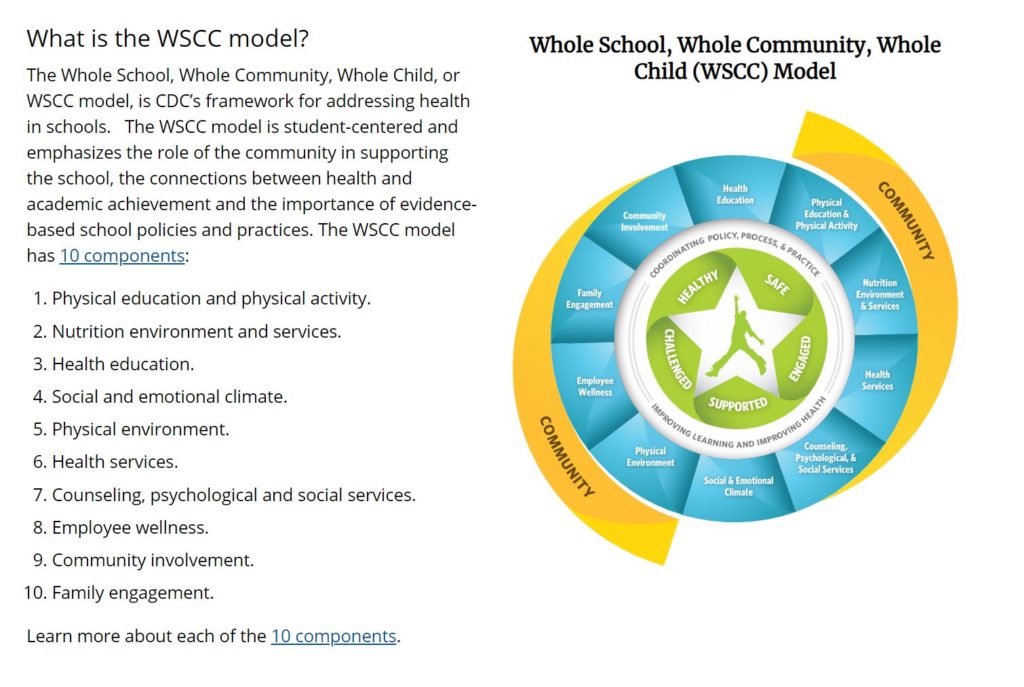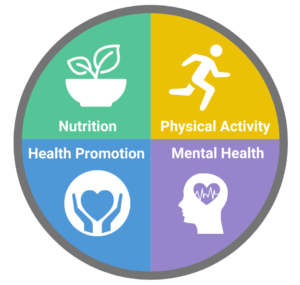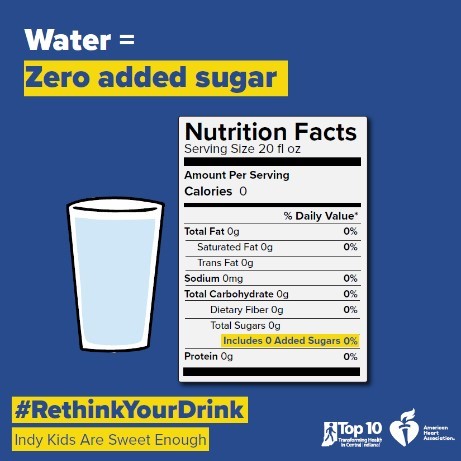Improving Physical Health Goes Hand in Hand with Supporting Mental Health
Using the WSCC model, Jump IN takes a wholistic approach to improving children’s health
Jump IN for Healthy Kids established its school program , Jump Right UP (JRU) in 2018 with support from the Indianapolis Colts. Now supported by the Marion County Public Health Department, over the last few years, JRU has served 46 high-risk school buildings in four Indianapolis school districts, impacting over 32,000 students. Using the WSCC Model as the framework for success, Jump Right UP assists schools in completing the School Health Index which helps schools pinpoint best practices to improve upon. Goals of Jump Right UP’s partnerships with schools include: establishing best practices around physical activity and nutrition, such as 30 minutes of physical activity every day; implementing a healthy celebration and vending policy; and engaging with the school community to establish a culture of health and wellness that helps schools, staff, students, and maybe even test scores.
The foundation of our JRU work is the Center for Disease Control and Prevention’s (CDC) Whole School, Whole Community, Whole Child model (WSCC – pronounced “whisk”).

While Jump IN’s overall goal is to reduce childhood overweight and obesity in central Indiana, you can see that the WSCC model doesn’t strictly address nutrition and physical activity, the two primary factors in keeping kids at a healthy weight. Instead, the WSCC model looks at the whole child, and includes equal attention to the social-emotional needs of a student. Eighteen months into the Covid-19 pandemic, research is emerging that suggests that both students’ physical and social-emotional health are in worse shape than they were before, with low-income children facing even poorer health outcomes.
When we talk about social-emotional wellness and mental health with respect to physical health, it is a two-way street. Overweight and obesity in children is linked to higher rates of depression. At the same time, depression can lead to poorer eating habits and less physical activity which can contribute to overweight and obesity. Each area of health influences the quality of the other, so we must acknowledge the link and develop our intervention strategies with both in mind.

Jump IN is currently exploring partnerships with two organizations that help join physical and mental health support forces: Bring Change to Mind and Playworks. Both organizations focus on supporting the whole child, with special attention on supporting mental health with physical activity and play. We are working on developing an intervention in schools that addresses mental health and physical health in a collaborative effort where strategies are deployed in alignment with one another. These strategies will build resilience in students, support social-emotional learning, and help students develop the skills needed for good mental and physical that support their path to wellbeing and academic success.
The Rethink Your Drink Campaign
Another area of work Jump IN is currently engaged with is Top 10 Coalition’s “Rethink Your Drink,” an awareness-building and advocacy campaign to encourage kids and families to reduce their consumption of sugar-sweetened beverages. This effort aligns with Jump IN’s 5-2-1-0 messaging, which calls for 5 fruits and vegetables, 2 hours or less of recreational screen time, 1 hour or more of physical activity and 0 sugary drinks every day. The Top 10 coalition includes members from local, leading health-focused organizations, including Jump IN, the Marion County Public Health Department, American Heart, Center for Wellness for Urban Women, and the Y. The campaign has been advertising on Radio One stations and on smart phones through digital ads around grocery stores in Indianapolis. You likely have seen or heard one of our spots already. Our terrific friend and ally Tamika Catchings lent her support to the cause. You can see her here on WRTV 6.

And please enjoy this TikTok video that a Lawrence North student (and TikTok influencer) created for us to show exactly how much sugary drinks an average kid in Indianapolis consumes each year – hint: it’s a whopping 30 gallons.
You can “Rethink Your Drink” by simply reducing your sugary-beverage intake and choosing water or milk. And if you are the grocery-purchaser for your household, you can influence what everyone in your house drinks by not buying sodas and other sugary soft drinks (even sports drinks have more sugar than you’d probably think). Stick with water because Indy’s kids are sweet enough!
Topics: Uncategorized
Subscribe for more
Want more ideas for healthy schools, workplaces, child care providers, and families? Subscribe to our blog for weekly tips delivered right to your inbox!
How Your Local Health Department Helps Keep You Safe and Healthy NEXT »
The Built Environment, Infrastructure, and Health by Design
